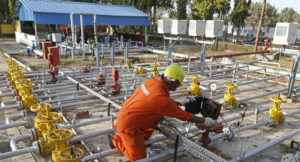Should fuel prices be brought under GST?
India nearly produces about 20 per cent of the total fuel supply domestically and there is no separate price mechanism to determine its price.
P

resident of the ruling BJP, Amit Shah, has said that taxing of fuel would be brought under GST regime. Following this statement, several state governments demanded that fuel should be kept out of the purview of GST. Thus, the panel that determines GST administration agreed upon the same. Taking into fuel pricing of India into consideration, which was earlier under administrative price mechanism, later brought to market mechanism, current prices of fuel are fixed in correspondence to the price of fuel in international markets. In addition, customs and taxes including state taxes are added into the current prices of fuel.
Fuel availability is the most essential element for the operation of any modern economy. In India, since the beginning, fuel was brought under heavy tax items since they are sold in large quantities. Till date, tax on fuel consist largest proportion in the indirect tax collections. It is applicable to state governments as well. Tamil Nadu is one of such states where its largest revenue accrued through fuel and liquor taxes. So, the state expressed its anguish over bringing fuel tax under the purview of GST. Deputy CM and Finance Minister of the state O Panneerselvam condemned this move strongly. In contrast, his budget speech has shown that the state in fact has benefitted out of GST regime since tax collection has witnessed ascendancy.
In recent past, country experienced the second highest price for the fuel in the history. Following the outcry Petroleum Minister Dhamendra Pradhan once again declared that the fuel tax would be brought under GST regime. Annually, the central government receives more than a lakh crore of revenue from fuel tax which stands around 10 per cent of total revenue which is of little more than 10 lakh crore. Forfeiting the revenue is certainly a drawback for the government and it has to find an alternative revenue sources in order to compensate the loss. Besides tax issues, the subsidy provided to the fuel was at high before liberalization, and slowly brought down to below the tax components and today, it is nothing but a mockery! There is no subsidy on fuels since the year 2015 as the government assistance is expected to be provisioned for largely LPG subsidy.
India nearly produces about 20 per cent of the total fuel supply domestically and there is no separate price mechanism to determine their price. Domestic production is added up with total imports and their price is also brought in terms of dollars. This is one of the reasons for higher prices.
International scenario has witnessed hike in fuel prices as the MEA region relieved with war within the areas of oil production. During the last six years crude prices were falling down since the Islamic radical forces kept parallel oil trade through the regions under their control. Several oil producers across the globe have huge reserves of oil and hence supply cannot be a constraint either. India too has entered into many JVs including Russia, Iran among others to explore oil resources. This gives strategic benefit and energy security to the country. Needless to say it has resulted in reduction of billing and saved billion of rupees to the exchequer.
Environmental issues are the main hurdle in expanding fuel consumption in the country. The world’s second most populous has marked as the third largest emitter of green gases and had introduced several measures to combat the crisis. Most of them target reduction in fuel production and consumption. Hence, once production shrinks prices would increase immediately. This is what happens across the world and solar powered vehicles and other alternatives are slowly, but steadily being introduced. Leading oil producers like Saudi Arabia looks at alternative non-oil revenue resources and disinvesting with oil shares.
Given the background bringing fuel under GST may provide relief to the economy which curtails advantageous accrued through faster economic growth. Less priced fuel would boost economic activity and release inflationary pressure which is caused by increasing fuel price in the country.
Now we have to address the concerns of the state which lose significant revenue sources and to lookout for other measures to fill-up the revenue gap. For example Tamil Nadu has been earning more than Rs 10,000 crores per annum still recently. Even to say during the presentation of interim budget for the year 2016-17, state Minister of Finance O Panneerselvam mentioned that the state has lost more than Rs 4,000 crores because of fall in crude prices internationally. At the same year revenue deficit of the state was a whopping Rs 9,000 Crore! Therefore, it is not a wonder many state governments oppose bringing fuel taxing under the ambit of GST regime.
India needs faster economic growth especially to achieve double digit growth in coming years. Bringing fuel under the GST regime would in fact suitable for the ambition. The government has to look into non-conventional and out-of-the-box ideas to compensate the loss in fuel tax and the state has to follow the same. For example, state like Tamil Nadu is yet to fully explore land tax collections and to expand commercial taxes to other avenues. The state has also to follow austerity measures to contain public expenditures. It can even withdraw few freebie schemes like free power to farmers who in fact demand quality power rather than a free one. Therefore, changing the trend of fuel taxation has chances to enhance the revenue and shall remain a stimulus to economic growth.
